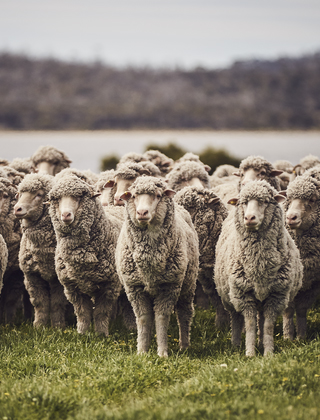Wool helps you stay ‘cool under pressure’

A new AWI-funded study run by the University of Adelaide has shown that people wearing wool perform better during cognitively stressful tasks than those wearing synthetics.
PHOTO: gorodenkoff
Many activities and jobs involve performing mentally difficult tasks under stressful situations. For those in more high-pressure occupations such as the health, defence and space industries, just a modest improvement in cognitive performance can mean the difference between life and death.
So, as part of its strategy to build further scientific evidence of wool’s benefits for human health and wellness, AWI asked the question: Does the composition of the textiles that people wear have any effect on cognitive performance?
“Up until now, there had been very few studies to indicate whether textile type in clothing has an impact in this respect,” said AWI Program Manager, Fibre Advocacy & Eco Credentials, Angus Ireland.
“However, human cognitive performance has already been shown to be sensitive to heat, humidity and temperature – and failure to effectively regulate body temperature and support physical comfort has been shown to diminish cognitive performance,” Angus said.
“Given wool’s ability to maintain a more stable microclimate between a garment and the skin, AWI recently invested in a project with the University of Adelaide to scientifically evaluate whether wearing a wool garment positively affects performance during cognitively stressful tasks, in comparison to when wearing a synthetic garment.”

Results from a new AWI-funded study show that wearing wool helps people perform better at cognitively stressful tasks, which could make a vital difference especially to those working in high-pressure occupations. (PHOTO: Tammy Hanratty)
University of Adelaide study
The study involved 62 participants (28 male, 34 female) with a median age of 22.61. All participants had either completed or were completing a degree or other tertiary qualification.
Under controlled laboratory conditions, the study investigated the impact on cognitive performance of wearing an upper body base-layer made from wool versus one made from synthetic fibres.
The researchers hypothesised that wool would provide the participants with greater efficacy in adapting to stress during cognitive testing, and that this would be reflected in participants’ (1) greater accuracy, (2) faster responses, and (3) decreased heart rate variability (HRV).
Results show wool outperforms synthetics
The experiment confirmed that at higher levels of problem difficulty, wearing wool allowed participants to perform better on the arithmetic problems they were presented with during testing, specifically in terms of response time and when corrected for a speed-accuracy trade-off.
Wool’s benefits were also confirmed by the HRV data, which showed that participants were slightly higher in HRV when wearing wool. This indicates that they had adapted more effectively to stress when wearing wool compared with synthetics.
Figure 1: HRV across stress levels and textile types, which shows that wool outperformed synthetics, particularly in the higher difficulty level conditions

“The researchers’ examination of the participants’ accuracy, response time and HRV showed that, as temperature increased, the effect of textile type on cognitive performance became more apparent. It clearly showed that wearing a wool garment helped the most in mitigating the impact of stress on cognitive performance,” Angus said.
“Through studies like this, AWI is building and extending the scientific basis for wool’s health and wellness credentials. Importantly, AWI is communicating these benefits through its marketing arm, The Woolmark Company, to the textile supply chain and consumers to help build demand for Australian wool.”
This article appeared in the September 2023 edition of AWI’s Beyond the Bale magazine. Reproduction of the article is encouraged.















